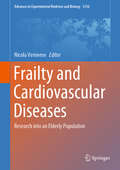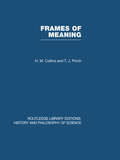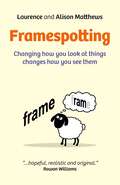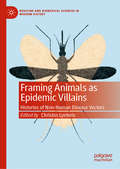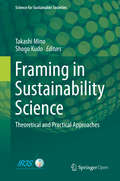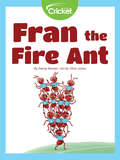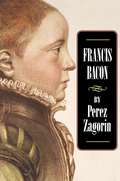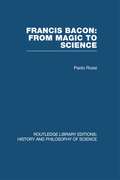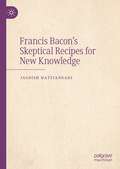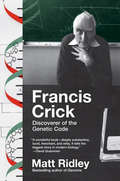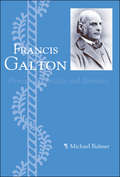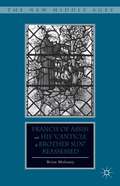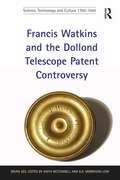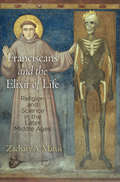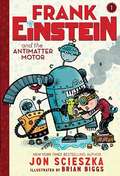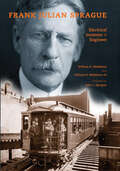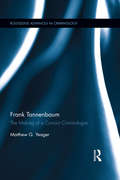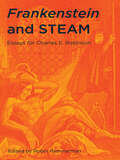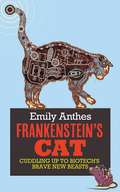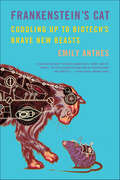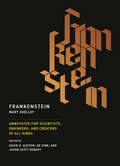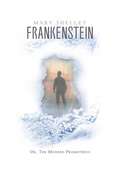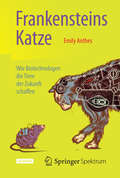- Table View
- List View
Frailty and Cardiovascular Diseases: Research into an Elderly Population (Advances in Experimental Medicine and Biology #1216)
by Nicola VeroneseThis book aims to clarify the potential association between frailty and cardiovascular disease in older people. Covering the biological as well as the clinical point of view, it allows researchers and clinicians to discover the significance of this topic. The contributions cover the most important aspects in the potential relationship between frailty and cardiovascular disease. In particular, authoritative authors in this field have clarified the definition and the epidemiology of frailty and cardiovascular disease in older people. A large part of the volume is dedicated to the biological mechanisms of frailty and cardiovascular disease, trying to find those in common between these two conditions. Since this book is dedicated to both researchers and clinicians, we have proposed some chapters to the importance of comprehensive geriatric assessment in the evaluation and treatment of cardiovascular diseases and frailty. In this regard, the importance of geriatric evaluation in cardiac surgery for older people is well covered. Finally, the importance of cardiac rehabilitation and physical exercise is summarized, being, actually, the most important treatments for both frailty and cardiovascular disease. Written by many well-known and widely published experts in their respective fields, this book will appeal to a wide readership such as researchers in the field and clinicians, especially suited in geriatric medicine and cardiology who, every day, face frail older patients.
Frame Theory in Data Science (Advances in Science, Technology & Innovation)
by Zhihua Zhang Palle E. JorgensenThis book establishes brand-new frame theory and technical implementation in data science, with a special focus on spatial-scale feature extraction, network dynamics, object-oriented analysis, data-driven environmental prediction, and climate diagnosis. Given that data science is unanimously recognized as a core driver for achieving Sustainable Development Goals of the United Nations, these frame techniques bring fundamental changes to multi-channel data mining systems and support the development of digital Earth platforms. This book integrates the authors' frame research in the past twenty years and provides cutting-edge techniques and depth for scientists, professionals, and graduate students in data science, applied mathematics, environmental science, and geoscience.
Frames of Meaning: The Social Construction of Extraordinary Science (Routledge Library Editions: History & Philosophy of Science)
by H M Collins & PinchOriginally published in 1982. Taking a radical interpretation of the Kuhnian concept of paradigm incommensurability, the authors begin by discussing the difficulties of gaining access to the ideas of communities with different rational categories, and then define the subject area of parapsychology, offering a review of the relevant literature. After exploring parapsychology’s compatibility with science, physics, psychology and quantum theory, the authors move on from this predominantly theoretical framework, and devote the middle section to an empirical study of metal bending. They conclude with an examination of the results, analyse diverse interpretations and investigate the consequences for the idea of scientific revolution.
Framespotting: Changing How You Look At Things Changes How You See Them
by Alison Matthews Laurence MatthewsLook at it this way... Everywhere we look, &“framing&” affects how we see things. Frames restrict our view, keeping us from seeing the whole truth, and subtly influencing our take on everything from deck-chairs to democracy. This upbeat, punchy guide to framespotting will open your eyes and your mind. Learn to notice frames and it&’s amazing what else you&’ll see: fresh ideas; how and why you&’re being hoodwinked; and how you&’re part of the transition from growth to growing up. Framespotting is empowering and liberating. And you&’ll never look at sprinklers or economists the same way again.
Framing Animals as Epidemic Villains: Histories of Non-Human Disease Vectors (Medicine and Biomedical Sciences in Modern History)
by Christos LynterisThis book takes a historical and anthropological approach to understanding how non-human hosts and vectors of diseases are understood, at a time when emerging infectious diseases are one of the central concerns of global health. The volume critically examines the ways in which animals have come to be framed as ‘epidemic villains’ since the turn of the nineteenth century. Providing epistemological and social histories of non-human epidemic blame, as well as ethnographic perspectives on its recent manifestations, the essays explore this cornerstone of modern epidemiology and public health alongside its continuing importance in today’s world. Covering diverse regions, the book argues that framing animals as spreaders and reservoirs of infectious diseases – from plague to rabies to Ebola – is an integral aspect not only to scientific breakthroughs but also to the ideological and biopolitical apparatus of modern medicine. As the first book to consider the impact of the image of non-human disease hosts and vectors on medicine and public health, it offers a major contribution to our understanding of human-animal interaction under the shadow of global epidemic threat.
Framing in Sustainability Science: Theoretical and Practical Approaches (Science for Sustainable Societies)
by Takashi Mino Shogo KudoThis open access book offers both conceptual and empirical descriptions of how to “frame” sustainability challenges. It defines “framing” in the context of sustainability science as the process of identifying subjects, setting boundaries, and defining problems. The chapters are grouped into two sections: a conceptual section and a case section. The conceptual section introduces readers to theories and concepts that can be used to achieve multiple understandings of sustainability; in turn, the case section highlights different ways of comprehending sustainability for researchers, practitioners, and other stakeholders. The book offers diverse illustrations of what sustainability concepts entail, both conceptually and empirically, and will help readers become aware of the implicit framings in sustainability-related discourses. In the extant literature, sustainability challenges such as climate change, sustainable development, and rapid urbanization have largely been treated as “pre-set,” fixed topics, while possible solutions have been discussed intensively. In contrast, this book examines the framings applied to the sustainability challenges themselves, and illustrates the road that led us to the current sustainability discourse.
Fran the Fire Ant
by Chris Jones Danny ResnerFran is a fire ant with a very important job—she’s a nurse ant! When the nest’s queen lays eggs, it’s the nurse ants’ job to raise the eggs into larvae and pupae so they grow up to become healthy worker ants to help build and run the nest.
Francis Bacon
by Perez ZagorinFrancis Bacon (1561-1626), commonly regarded as one of the founders of the Scientific Revolution, exerted a powerful influence on the intellectual development of the modern world. He also led a remarkably varied and dramatic life as a philosopher, writer, lawyer, courtier, and statesman. Although there has been much recent scholarship on individual aspects of Bacon's career, Perez Zagorin's is the first work in many years to present a comprehensive account of the entire sweep of his thought and its enduring influence. Combining keen scholarly and psychological insights, Zagorin reveals Bacon as a man of genius, deep paradoxes, and pronounced flaws. The book begins by sketching Bacon's complex personality and troubled public career. Zagorin shows that, despite his idealistic philosophy and rare intellectual gifts, Bacon's political life was marked by continual careerism in his efforts to achieve advancement. He follows Bacon's rise at court and describes his removal from his office as England's highest judge for taking bribes. Zagorin then examines Bacon's philosophy and theory of science in connection with his project for the promotion of scientific progress, which he called "The Great Instauration." He shows how Bacon's critical empiricism and attempt to develop a new method of discovery made a seminal contribution to the growth of science. He demonstrates Bacon's historic importance as a prophetic thinker, who, at the edge of the modern era, predicted that science would be used to prolong life, cure diseases, invent new materials, and create new weapons of destruction. Finally, the book examines Bacon's writings on such subjects as morals, politics, language, rhetoric, law, and history. Zagorin shows that Bacon was one of the great legal theorists of his day, an influential philosopher of language, and a penetrating historian. Clearly and beautifully written, the book brings out the richness, scope, and greatness of Bacon's work and draws together the many, colorful threads of an extraordinarily brilliant and many-sided mind.
Francis Bacon: De La Magia A La Ciencia (Routledge Library Editions: History & Philosophy of Science #Vol. 606)
by Paolo RossiOriginally published in 1968. This volume discusses Francis Bacon’s thought and work in the context of the European cultural environment that influenced Bacon’s philosophy and was in turn influenced by it. It examines the influence of magical and alchemical traditions on Bacon and his opposition to these traditions, as well as illustrating the naturalist, materialist and ethico-political patterns in Bacon’s allegorical interpretations of fables.
Francis Bacon’s Skeptical Recipes for New Knowledge
by Jagdish HattiangadiThe book sets an ambitious goal. It devises a new account of scientific methodology that makes it possible to explain how scientists manage, at least occasionally, to find true models of reality. The new methods may be contrasted with all those currently available that employ “coherence theories” of knowledge. Under this designation are grouped positions that can seem very different (such as those of Poincaré, Duhem, Popper, Hempel, Quine, Kuhn, and Feyerabend) but are united by the idea that the most general statements of science are merely hypotheses. They may be conjectures, opinions, conventions, posits, paradigms, or even myths. The most we can claim to know from such generalities is that they are internally consistent and coherent with empirical data. Consistency is insufficient to establish the truth of a conceptual system because many different systems, perhaps an infinite number, can be logically consistent and cohere with recorded data. Such is the well-known problemof the empirical under-determination of theories. Francis Bacon’s Skeptical Recipes for New Knowledge suggests a new methodology that solves this fundamental problem of knowledge.
Francis Crick: Discoverer of the Genetic Code
by Matt RidleyFrancis Crick--the quiet genius who led a revolution in biology by discovering, quite literally, the secret of life--will be bracketed with Galileo, Darwin, and Einstein as one of the greatest scientists of all time. In his fascinating biography of the scientific pioneer who uncovered the genetic code--the digital cipher at the heart of heredity that distinguishes living from non-living things--acclaimed bestselling science writer Matt Ridley traces Crick's life from middle-class mediocrity in the English Midlands through a lackluster education and six years designing magnetic mines for the Royal Navy to his leap into biology at the age of thirty-one and its astonishing consequences. In the process, Ridley sheds a brilliant light on the man who forever changed our world and how we understand it.
Francis Galton: Pioneer of Heredity and Biometry
by Michael BulmerIf not for the work of his half cousin Francis Galton, Charles Darwin's evolutionary theory might have met a somewhat different fate. In particular, with no direct evidence of natural selection and no convincing theory of heredity to explain it, Darwin needed a mathematical explanation of variability and heredity. Galton's work in biometry—the application of statistical methods to the biological sciences—laid the foundations for precisely that. This book offers readers a compelling portrait of Galton as the "father of biometry," tracing the development of his ideas and his accomplishments, and placing them in their scientific context.Though Michael Bulmer introduces readers to the curious facts of Galton's life—as an explorer, as a polymath and member of the Victorian intellectual aristocracy, and as a proponent of eugenics—his chief concern is with Galton's pioneering studies of heredity, in the course of which he invented the statistical tools of regression and correlation. Bulmer describes Galton's early ambitions and experiments—his investigations of problems of evolutionary importance (such as the evolution of gregariousness and the function of sex), and his movement from the development of a physiological theory to a purely statistical theory of heredity, based on the properties of the normal distribution. This work, culminating in the law of ancestral heredity, also put Galton at the heart of the bitter conflict between the "ancestrians" and the "Mendelians" after the rediscovery of Mendelism in 1900. A graceful writer and an expert biometrician, Bulmer details the eventual triumph of biometrical methods in the history of quantitative genetics based on Mendelian principles, which underpins our understanding of evolution today.
Francis Of Assisi And His "canticle Of Brother Sun" Reassessed
by Brian MoloneyBringing the skills of a literary historian to the subject, Brian Moloney considers the genesis of Saint Francis of Assisi's Canticle of Brother Sun to show how it works as a carefully composed work of art. The study examines the saint's life and times, the structure of the poem, the features of its style, and the range of its possible meanings.
Francis Watkins and the Dollond Telescope Patent Controversy (Science, Technology and Culture, 1700-1945)
by Brian Gee edited by McConnellFrancis Watkins was an eminent figure in his field of mathematical and optical instrument making in mid-eighteenth century London. Working from original documents, Brian Gee has uncovered the life and times of an optical instrument maker, who - at first glance - was not among the most prominent in his field. In fact, because Francis Watkins came from a landed background, the diversification of his assets enabled him to weather particular business storms - discussed in this book - where colleagues without such an economic cushion, were pushed into bankruptcy or forced to emigrate. He played an important role in one of the most significant legal cases to touch this profession, namely the patenting of the achromatic lens in telescopes. The book explains Watkins's origins, and how and why he was drawn into partnership with the famous Dollond firm, who at that point were Huguenot incomers. The patent for the achromatic telescope has never been satisfactorily explained in the literature, and the author has gone back to the original legal documents, never before consulted. He teases out the problems, lays out the evidence, and comes to some interesting new conclusions, showing the Dollonds as hard-headed and ruthless businessmen, ultimately extremely successful. The latter part of the book accounts for the successors of Francis Watkins, and their decline after over a century of successful business in central London.
Franciscans and the Elixir of Life: Religion and Science in the Later Middle Ages (The Middle Ages Series)
by Zachary A. MatusOne of the major ambitions of medieval alchemists was to discover the elixir of life, a sovereign remedy capable not only of healing the body but of transforming it. Given the widespread belief that care for the body came at the cost of care for the soul, it might seem surprising that any Franciscan would pursue the elixir, but those who did were among its most outspoken and optimistic advocates. They believed they could distill a substance that would purify, transmute, and ennoble the human body as well as the soul. In an age when Christians across Europe were seeking material evidence for their faith and corporeal means of practicing their devotion, alchemy, and the elixir in particular, offered a way to bridge the terrestrial and the celestial.Framed as a history around science, Franciscans and the Elixir of Life focuses on alchemy as a material practice and investigates the Franciscan discourses and traditions that shaped the pursuit of the elixir, providing a rich examination of alchemy and religiosity. Zachary A. Matus makes new connections between alchemy, ritual life, apocalypticism, and the particular commitment of the Franciscan Order to the natural world, shedding new light on the question of why so many people claimed to have made, seen, or used alchemical compounds that could never have existed.
Frank Einstein and the Antimatter Motor
by Jon ScieszkaIn his Grandpa Al's garage workshop, child genius Frank Einstein tries to invent a robot that can learn on its own, and after an accident brings wisecracking Klink and overly expressive Klank to life, they set about helping Frank perfect his Antimatter Motor until his archnemesis, T. Edison, steals the robots for his doomsday plan.
Frank Einstein and the Brain Turbo
by Jon Scieszka Brian Biggs<P>More clever science experiments, funny jokes, and robot hijinks await readers in book three of the New York Times bestselling Frank Einstein chapter book series from the mad scientist team of Jon Scieszka and Brian Biggs. <P>The perfect combination to engage and entertain readers, the series features real science facts with adventure and humor, making these books ideal for STEM education. This latest installment examines the quest to unlock the power behind the science of "the human body."
Frank Julian Sprague: Electrical Inventor and Engineer (Railroads Past And Present Ser.)
by William D. MiddletonFrank Julian Sprague invented a system for distributing electricity to streetcars from overhead wires. Within a year, electric streetcars had begun to replace horsecars, sparking a revolution in urban transportation. Sprague (1857-1934) was an American naval officer turned inventor who worked briefly for Thomas Edison before striking out on his own. Sprague contributed to the development of the electric motor, electric railways, and electric elevators. His innovations would help transform the urban space of the 20th century, enabling cities to grow larger and skyscrapers taller. The Middletons' generously illustrated biography is an engrossing study of the life and times of a maverick innovator.
Frank Tannenbaum: The Making of a Convict Criminologist (Routledge Advances in Criminology)
by Matthew G. YeagerFrank Tannenbaum and the Making of a Convict Criminologist is a historical biography about Columbia University professor Frank Tannenbaum and his contribution to American criminology. Tannenbaum was a major figure in criminology in the early twentieth century, and is known for his contributions to labeling theory, particularly his conception of the "dramatization of evil" presented in his 1938 book, Crime and Community. Tannenbaum served a year on Blackwell’s Island in New York City for labor disturbances in 1914 and subsequently became a prison reformer, writing about his experiences with the American penal system and serving as the official reporter for the Wickersham Commission’s study on Penal Institutions, Probation, and Parole in 1931. This book explores his unique early career, and his influence on convict criminology, drawing on his personal papers housed at the Butler Library at Columbia University.
Frankenstein and STEAM: Essays for Charles E. Robinson
by Brian Bates Susan J. Wolfson Mark A. McCutcheon Lisa Crafton Siobhan Watters Lisbeth Chapin L. Adam Mekler Robin HammermanCharles E. Robinson, Professor Emeritus of English at The University of Delaware, definitively transformed study of the novel Frankenstein with his foundational volume The Frankenstein Notebooks and, in nineteenth century studies more broadly, brought heightened attention to the nuances of writing and editing. Frankenstein and STEAM consolidates the generative legacy of his later work on the novel's broad relation to topics in science, technology, engineering, arts, and mathematics (STEAM). Seven chapters written by leading and emerging scholars pay homage to Robinson's later perspectives of the novel and a concluding postscript contains remembrances by his colleagues and students. This volume not only makes explicit the question of what it means to be human, a question Robinson invited students and colleagues to examine throughout his career, but it also illustrates the depth of the field and diversity of those who have been inspired by Robinson's work. Frankenstein and STEAM offers direction for continuing scholarship on the intersections of literature, science, and technology. Published by the University of Delaware Press. Distributed worldwide by Rutgers University Press.
Frankenstein's Cat: Cuddling Up to Biotech's Brave New Beasts
by Emily AnthesFrom the petri dish to the pet shop, meet the high-tech menagerie of the near future, as humans reinvent the animal kingdom Fluorescent fish that glow near pollution. Dolphins with prosthetic fins. Robot-armoured beetles that military handlers can send on spy missions. Beloved pet pigs resurrected from DNA. Scientists have already begun to create these high-tech hybrids to serve human whims and needs. What if a cow could be engineered to no longer feel pain - should we design a herd that would assuage our guilt over eating meat? Acclaimed science writer Emily Anthes travels round the globe to meet the fauna of the future, from the Scottish birthplace of Dolly the sheep and other clones to a 'pharm' for cancer-fighting chickens. Frankenstein's Cat is an eye-opening exploration of weird science - and how we are playing god in the animal world.
Frankenstein's Cat: Cuddling Up to Biotech's Brave New Beasts
by Emily AnthesWinner of 2014 AAAS/Subaru SB&F Prize for Best Young Adult Science BookLonglisted for the PEN/E.O. Wilson Literary Science Writing AwardOne of Nature's Summer Book PicksOne of Publishers Weekly's Top Ten Spring 2013 Science BooksFor centuries, we've toyed with our creature companions, breeding dogs that herd and hunt, housecats that look like tigers, and teacup pigs that fit snugly in our handbags. But what happens when we take animal alteration a step further, engineering a cat that glows green under ultraviolet light or cloning the beloved family Labrador? Science has given us a whole new toolbox for tinkering with life. How are we using it?In Frankenstein's Cat, the journalist Emily Anthes takes us from petri dish to pet store as she explores how biotechnology is shaping the future of our furry and feathered friends. As she ventures from bucolic barnyards to a "frozen zoo" where scientists are storing DNA from the planet's most exotic creatures, she discovers how we can use cloning to protect endangered species, craft prosthetics to save injured animals, and employ genetic engineering to supply farms with disease-resistant livestock. Along the way, we meet some of the animals that are ushering in this astonishing age of enhancement, including sensor-wearing seals, cyborg beetles, a bionic bulldog, and the world's first cloned cat.Through her encounters with scientists, conservationists, ethicists, and entrepreneurs, Anthes reveals that while some of our interventions may be trivial (behold: the GloFish), others could improve the lives of many species-including our own. So what does biotechnology really mean for the world's wild things? And what do our brave new beasts tell us about ourselves?With keen insight and her trademark spunk, Anthes highlights both the peril and the promise of our scientific superpowers, taking us on an adventure into a world where our grandest science fiction fantasies are fast becoming reality.
Frankenstein: Annotated for Scientists, Engineers, and Creators of All Kinds
by Mary ShelleyThe original 1818 text of Mary Shelley's classic novel, with annotations and essays highlighting its scientific, ethical, and cautionary aspects.Mary Shelley's Frankenstein has endured in the popular imagination for two hundred years. Begun as a ghost story by an intellectually and socially precocious eighteen-year-old author during a cold and rainy summer on the shores of Lake Geneva, the dramatic tale of Victor Frankenstein and his stitched-together creature can be read as the ultimate parable of scientific hubris. Victor, “the modern Prometheus,” tried to do what he perhaps should have left to Nature: create life. Although the novel is most often discussed in literary-historical terms—as a seminal example of romanticism or as a groundbreaking early work of science fiction—Mary Shelley was keenly aware of contemporary scientific developments and incorporated them into her story. In our era of synthetic biology, artificial intelligence, robotics, and climate engineering, this edition of Frankenstein will resonate forcefully for readers with a background or interest in science and engineering, and anyone intrigued by the fundamental questions of creativity and responsibility. This edition of Frankenstein pairs the original 1818 version of the manuscript—meticulously line-edited and amended by Charles E. Robinson, one of the world's preeminent authorities on the text—with annotations and essays by leading scholars exploring the social and ethical aspects of scientific creativity raised by this remarkable story. The result is a unique and accessible edition of one of the most thought-provoking and influential novels ever written.Essays byElizabeth Bear, Cory Doctorow, Heather E. Douglas, Josephine Johnston, Kate MacCord, Jane Maienschein, Anne K. Mellor, Alfred Nordmann
Frankenstein: or, The Modern Prometheus
by Mary ShelleyThis deluxe ebook package features Mary Shelley’s classic gothic novel plus an extended excerpt of award winning author Kenneth Oppel’s thrilling prequel, This Dark Endeavor! What happens when an obsession defies your control? Victor Frankenstein has long sought the answer to creating new life. When he finally achieves his goal, he’s horrified by the results and abandons his creation, ready to forget what he’s done. But when tragedy befalls his family, Victor returns home to discover his creation is hiding nearby. To save his family from further despair, Frankenstein’s creature asks him to do the one thing he swore he never would do again. Mary Shelley’s novel explores with chilling dimensions the questions that reside at our core. What is the fabric of life and the soul? Where are the limits of our imagination? Can man’s reach shatter the boundaries between science, nature and God?
Frankensteins Katze: Wie Biotechnologen die Tiere der Zukunft schaffen
by Emily AnthesSchöne neue Tierwelt?Fluoreszierende Fische, die bei UV-Bestrahlung leuchten. Delfine mit künstlichen Flossen. Zu Robotern umfunktionierte Käfer, die vom Militär auf Spionagemissionen ausgesandt werden können. Innig geliebte Haustiere, die man mithilfe ihrer DNA wieder auferstehen lässt.Forscher in aller Welt sind bereits dabei, solche Wesen in die Welt zu setzen. Mancher Weg führt von der Petrischale geradewegs ins Zoogeschäft. Dieses Buch wagt einen – beunruhigenden, aber zugleich faszinierenden – Blick in die High-Tech-Menagerie der nahen Zukunft. Erfinden wir das Tierreich gerade neu? Zu welchem Zweck: um menschliche Launen oder Bedürfnisse zu befriedigen? Spielen wir uns in der Biotechnologie oder Technobiologie zum Schöpfer auf? Wenn sich Kühe gentechnisch so verändern ließen, dass sie keine Schmerzen mehr empfinden – könnten solche Tiere unser schlechtes Gewissen beim Fleischverzehr beruhigen?Die Wissenschaftsjournalistin Emily Anthes ist um die Welt gereist, um die Fauna der Zukunft kennenzulernen, vom schottischen Geburtsort des Klonschafes Dolly über die Forschungsstätten, in denen Lebewesen technisch aufgerüstet werden, bis zu einer „Pharm“ für Hühner, die bei der Krebsbekämpfung helfen sollen. Frankensteins Katze nimmt Sie mit auf eine Entdeckungsreise durch ein wundersames und oft bizarres Wissenschaftsgebiet – und stellt kritische Fragen.Emily Anthes berichtet von den verrückteren Seiten der Tier-Biotechnologie. NatureGeistreich und gut recherchiert. The New York TimesFaszinierend, scharf beobachtet und ein wenig beängstigend. New Scientist_____Schon seit Jahrhunderten verändern wir unsere tierischen Begleiter: Wir haben Hunde gezüchtet, die jagen oder Schafe hüten, Kühe mit verbesserter Milchleistung, Hauskatzen, die genau wie Tiger aussehen, und kleine Schweine, die in eine Handtasche passen. Aber jetzt hat eine neue Phase der Manipulation tierischer Organismen begonnen, in der uns die Wissenschaft einen immer vielfältigeren Werkzeugkasten für das „Basteln“ mit dem Leben bereitstellt. Emily Anthes führt uns in eine Welt zwischen Petrischale und Zoohandlung, zwischen Bauernhof und Militärlabor, in der Biotechnologen die Zukunft unserer pelzigen und gefiederten Freunde und unserer Nutztiere gestalten.Es gibt eine Katze, die grün leuchtet, wenn man sie mit UV-Licht bestrahlt. Den geliebten Familienlabrador lassen wir durch Klonen wieder auferstehen. In Tiefkühlzoos wird die Erbsubstanz zahlreicher seltener Tiere archiviert, schwer verletzte Tiere können mit Prothesen wieder ein fast normales Leben führen, Kühe, Schweine und Hühner werden mit Krankheitsresistenzen ausgestattet. Die Manipulationen gehen über die Biologie hinaus. Seehunde schwimmen mit eingepflanzten Sensoren durch die Meere, um Umweltbedingungen zu messen und Daten zu übermitteln, Ratten werden für militärische oder humanitäre Zwecke ferngesteuert, mit Roboterschaben soll im Unterricht neurobiologisches Wissen vermittelt werden.Anthes berichtet von Begegnungen mit Wissenschaftlern, Naturschützern, Ethikern und Unternehmern. Und sie stellt kritische Fragen: Welchen Nutzen haben die vorgenommenen Veränderungen? Soll alles, was möglich ist, auch getan werden? Welche Konsequenzen hat die neue Macht der Biotechnologie für unsere Tierwelt? Und was verraten uns die neu geschaffenen Kreaturen über uns selbst? Frankensteins Katze beleuchtet diesen abenteuerlichen Weg, auf dem Science Fiction-Vorstellungen zu Realität werden, und geht den Verheißungen und Gefahren dieser Entwicklungen nach.
